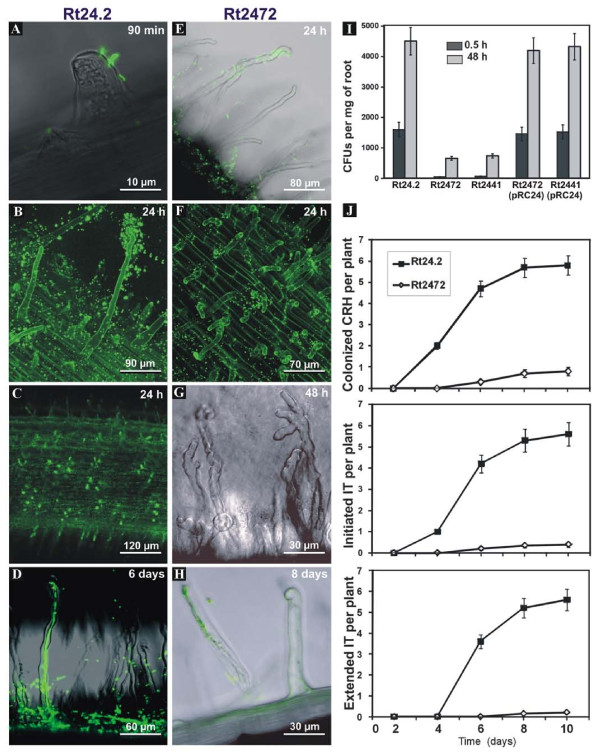Figure 10.
Root attachment and infection of clover roots by the rosR mutant and the wild type. Fluorescence microscopy analyses of clover root colonization and invasion by GFP-expressing cells of R. leguminosarum bv. trifolii wild type (A-D) and the rosR mutant (Rt2472) (E-H). The Rt24.2 cells attached very fast and effectively to root hairs (A-B), and formed caps on the top of root hairs (C). (D) Curled root hairs with an extended infection thread filled with the wild type cells. The infection thread started from the Shepherd's crook of the curled root hair and reached the base of root hair. The ability of root attachment and root cap formation of the rosR mutant was substantially decreased (E-F). Only individual cells of the Rt2472 rosR mutant attached to root hairs (E) and root caps were formed sporadically (F). Several root hairs showed abnormal deformation (G). The root hair colonized by the rosR mutant, which had developed an aborted infection thread (H). (I) Attachment to clover roots 0.5 h and 48 h post inoculation with the wild type, and the Rt2472 and Rt2441 rosR mutants, and their derivatives complemented with pRC24. For each strain, ten roots were examined. Data shown are the means of two replicates ± SD. (J) Kinetics of curled root hair (CRH) formation, infection thread (IT) initiation and extension on clover plants inoculated with the wild type and the rosR mutant (Rt2472). For each strain, 25 plants were used. Data shown are the means of two experiments.

